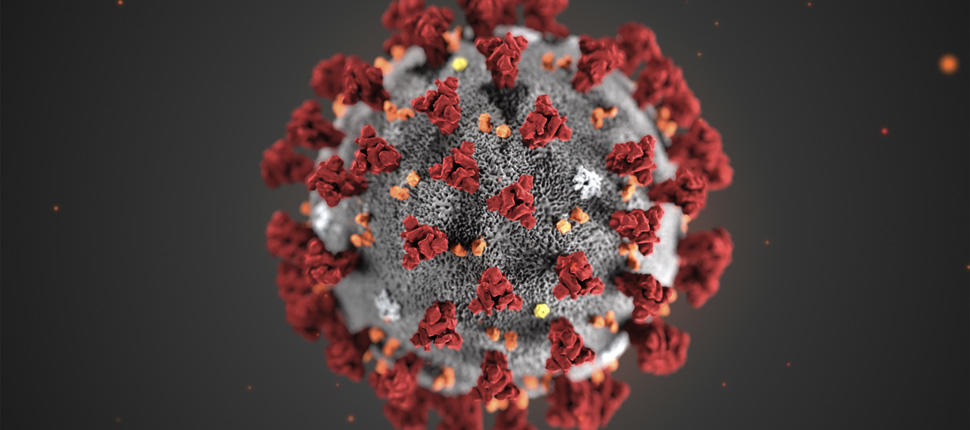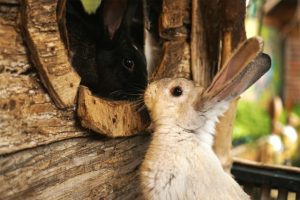
Coronavirus is a group or family of viruses that occur in the form of a disease and it usually affects humans (Lauren Sauer). Coronavirus can cause some common to most severe and dangerous diseases which include SARS (Severe Acute Respiratory Syndrome) and MERS (Middle East Respiratory Syndrome). It has been named as a novel coronavirus because it is a unique kind of disease that has not been identified in humans before.
Its symptoms include fever, cough, shortness of breath, etc. it becomes dangerous because it can be transferred from one to another when they make contact. The WHO named it COVID- 19 because it was discovered in 2019 in Wuhan city of China whereas CO means Corona; VI means virus and the last word D means Disease (World Health Organization , 2020).
Contents
Corona was a disease that first occurs in animals like birds and mammals that occurred first in 2003. It can affect animals especially cats, mice, and birds. While some researches also show that it can be transferred among animals through ocular (eyes) tissues. Some other animals can also be affected either in the same or different way, while some animals are said to be safe from this virus but there is extensive research needs to be done to prove this hypothesis (Seah, 2020).
A new virus in rabbits:
A new virus in rabbits is said to be described that is known to be a human virus generally. This virus is also found in other animals. This virus exists for approximately 11 days in rabbits and other animals. After that, they either die or recover from it.
This virus can be transmitted among rabbits through different tissues or infectious sera dilution up to 10(-6), which is then passed through 0.1-micron filters. The virus mostly is present in the form of particles in rabbits having morphologic features that are not present in normal or uninfected rabbits. These morphologic features are characteristics of coronavirus related to animals.
However, this virus does not infect mice, hamsters, or guinea pigs. Though it is still unclear whether they will not be affected permanently or is it just for the time being. The evolution of this virus is still uncertain whether it is natural or is it just artificially made for rabbits. By the initial assumptions, it is said to be a human virus that has transferred to rabbits, but still, it has been proved. Rabbit infectious cardiomyopathy is suggested for this virus that has affected rabbits (Small J. D., 1979).
The coronavirus in rabbit (RbCV) was first discovered in1961 when many rabbits died in Scandinavian countries due to Nichols strain of Treponema pallidum. The researchers observed that a filterable agent was causative and it initially targeted the heart. The electron microscopy was the device that tested this virus and was named corona. This virus was also said to be transferred to humans (Small, 1987).
It is still unfinished research whether rabbits are infected by coronavirus or not but some recent studies suggest that rabbits can get coronavirus. MERS-CoV (Middle East respiratory syndrome coronavirus) causes rabbits to be infected. The virus in rabbits was said to be observed in their lungs mostly. However, no other major symptoms were observed. The upper respiratory tract of rabbits was also said to be infected by the virus (Haagmans, 2015).
The mystery is still unresolved whether the virus in rabbits originated naturally or it was transmitted artificially. This virus was found in testicular tissues of rabbits but the symptoms may vary. However, the infected rabbits normally died within 5 days of the disease. Different forms of the virus have been investigated in rabbits, however, presently coronavirus-induced pleural effusion and cardiomyopathy are said to be present in rabbits while the pet rabbits are said to be safe from this virus (Infectious Diseases of Domestic Rabbits, 2014).
Detection of virus:
Coronavirus is present in different animals in different organs, sizes, and shapes. Three types of coronaviruses (Alpha, Beta, and Gamma) are detected to be found in animals. The Alpha and beta-coronavirus are present in mammals and gamma coronavirus are normally found in birds. However, studies showed that gamma virus can also be found in mammals.
The delta coronavirus is also recently detected in birds and pigs. For this purpose, 136 samples of rabbits were taken in which 11 (8.1%) were tested positive of the virus. Rabbits mostly were found to have a unique type of beta coronavirus of subgroup A in which around 90% of rabbits were said to have detected from it (Susanna K. P. Lau, 2012).
Coronavirus in rabbits is diagnosed with RNA intestine tissues. It is also diagnosed in the feces of rabbits. Rectal and nasal swab fluids also showed the detection of Coronavirus. These infections can be diagnosed within 3 days performing tests through feces or nasal or rectal swab fluids. In the small intestine of the rabbits, there is a detection of B-CoV antigens in rabbits that got infected. The average outbreak of this virus is reported to be 59-100% of the total (Saif, 2009).
Conclusion:
The above discussion concludes that coronavirus exists in rabbits in different forms. The names, species, types, or forms of the virus can be different but the virus is present in them. However, the origin of the virus is yet to be determined but it can affect animals and especially rabbits. The death ratio of the virus among rabbits is low but the infection rate is high which an alarming situation among them is as this virus can be transferred among them. Though it is said to be a human virus and the solution/drug or treatment for it is still to be found, the animals and especially rabbits need to be kept away from humans to stop the transmission of the disease among animals.
Bibliography
Haagmans, B. L. (2015). Asymptomatic Middle East respiratory syndrome coronavirus infection in rabbits. Journal of virology, 89(11), 6131-6135.
Infectious Diseases of Domestic Rabbits. (2014). Sciencedirect.
Lauren Sauer, M. (n.d.). What Is Coronavirus? Johns Hopkins Medicine.
Saif, L. J. (2009). Winter Dysentery. Sciencedirect.
Seah, I. &. (2020). Can the coronavirus disease 2019 (COVID-19) affect the eyes? A review of coronaviruses and ocular implications in humans and animals. Ocular immunology and inflammation, 28(3), 391-395.
Small, J. D. (1979). Rabbit cardiomyopathy associated with a virus antigenically related to human coronavirus strain 229E. The American journal of pathology, 95(3), 709.
Small, J. D. (1987). Relatedness of rabbit coronavirus to other coronaviruses. In Coronaviruses, (pp. 521-527). Springer, Boston, MA.
Susanna K. P. Lau, P. C.-H.-Y.-J.-Y. (2012). Isolation and Characterization of a Novel Betacoronavirus Subgroup A Coronavirus, Rabbit Coronavirus HKU14, from Domestic Rabbits. Journal of virology, 86(10) , 5481-5496.
World Health Organization. (2020, July 03). Retrieved from https://www.emro.who.int/health-topics/corona-virus/questions-and-answers.html





